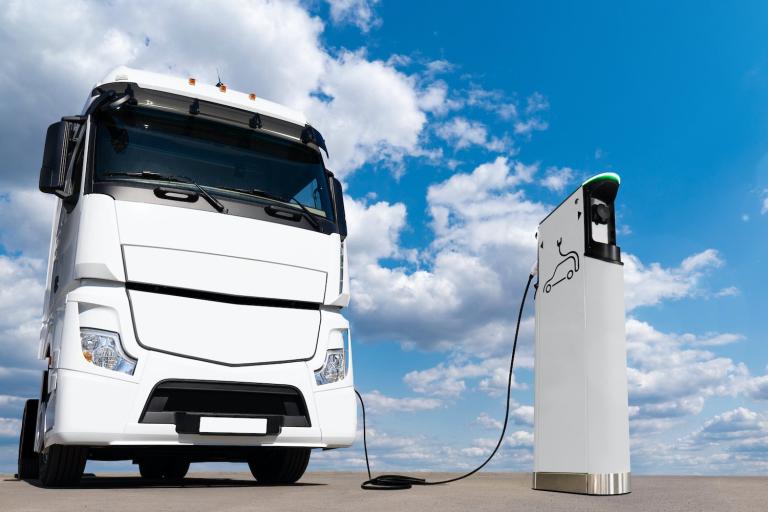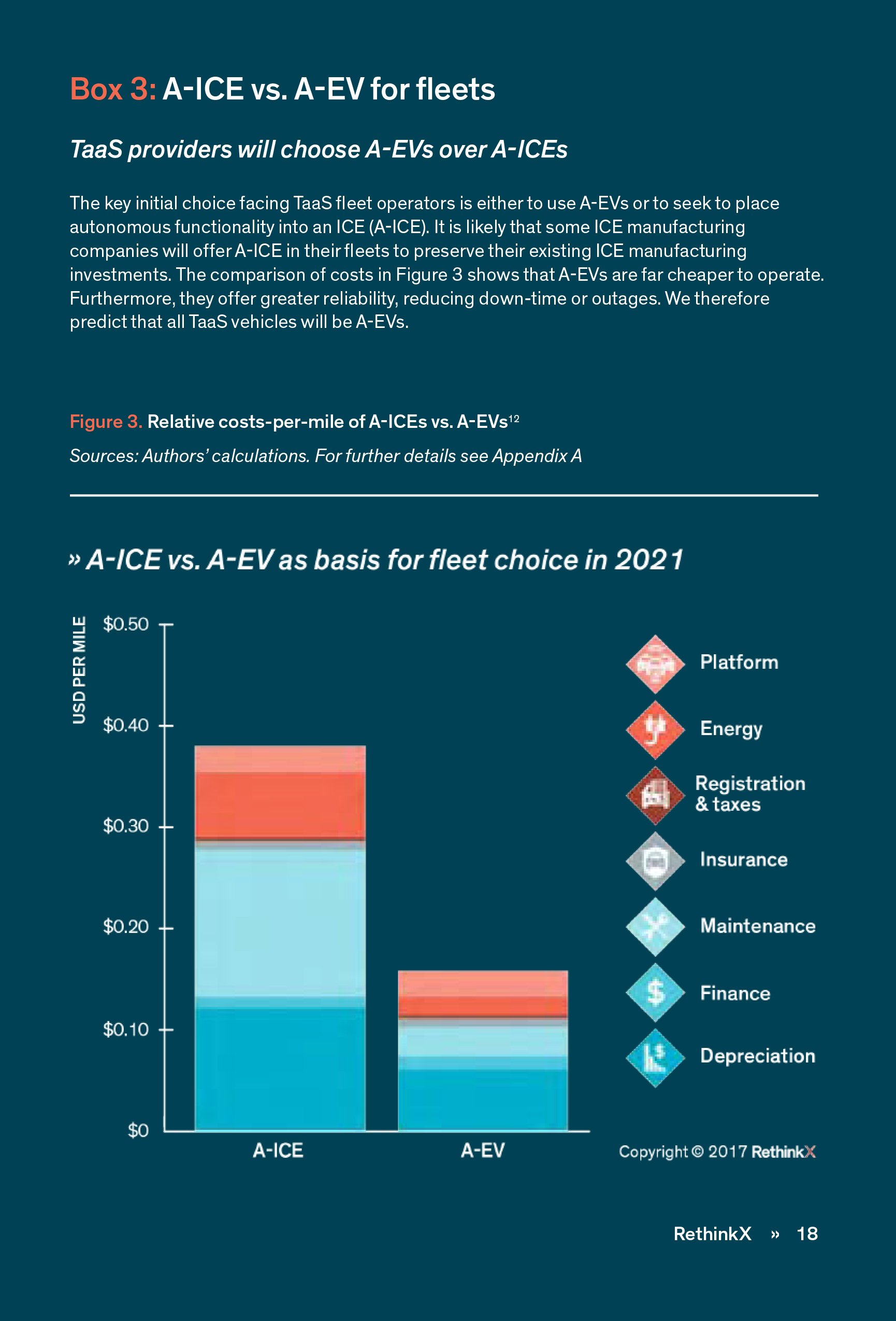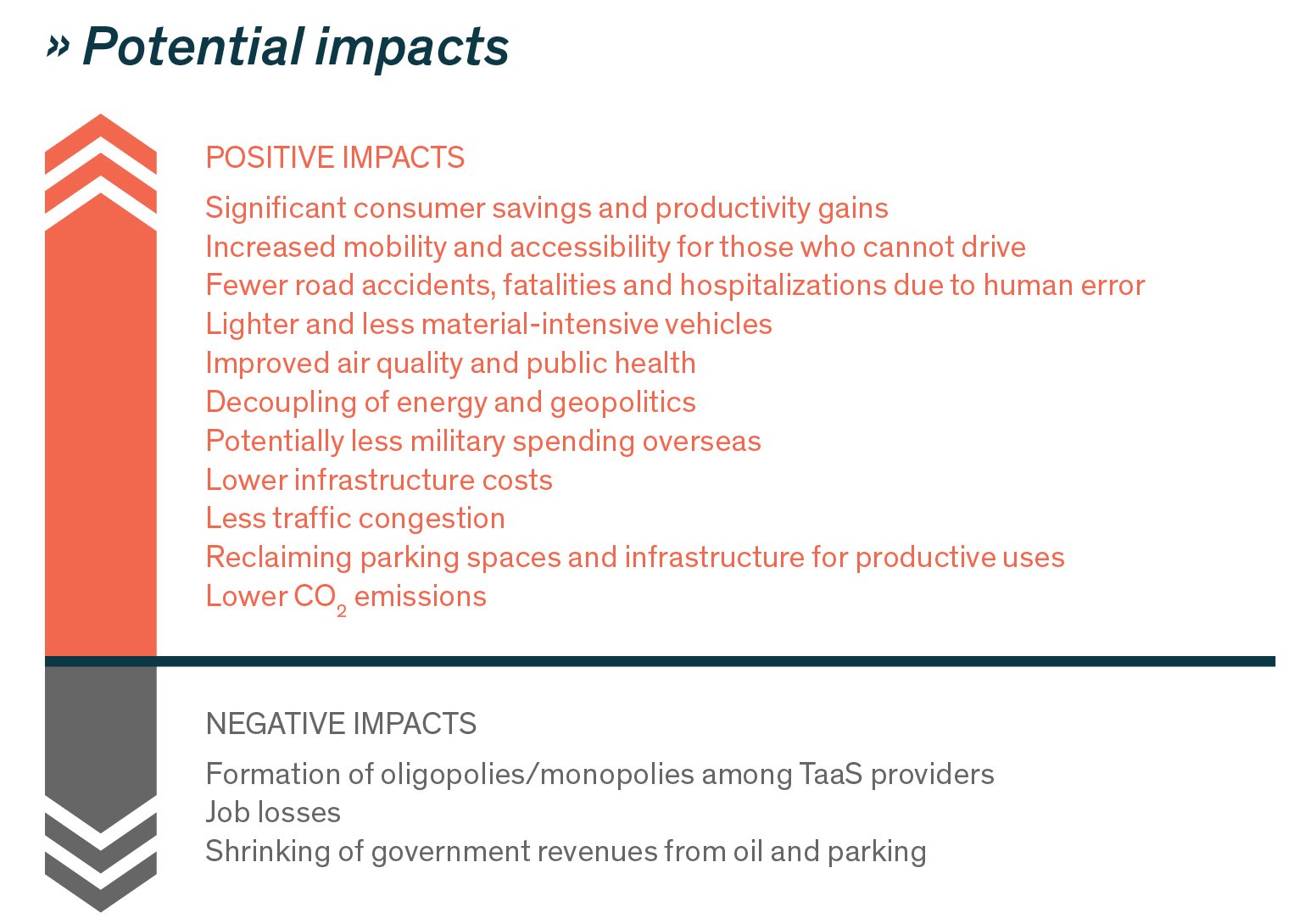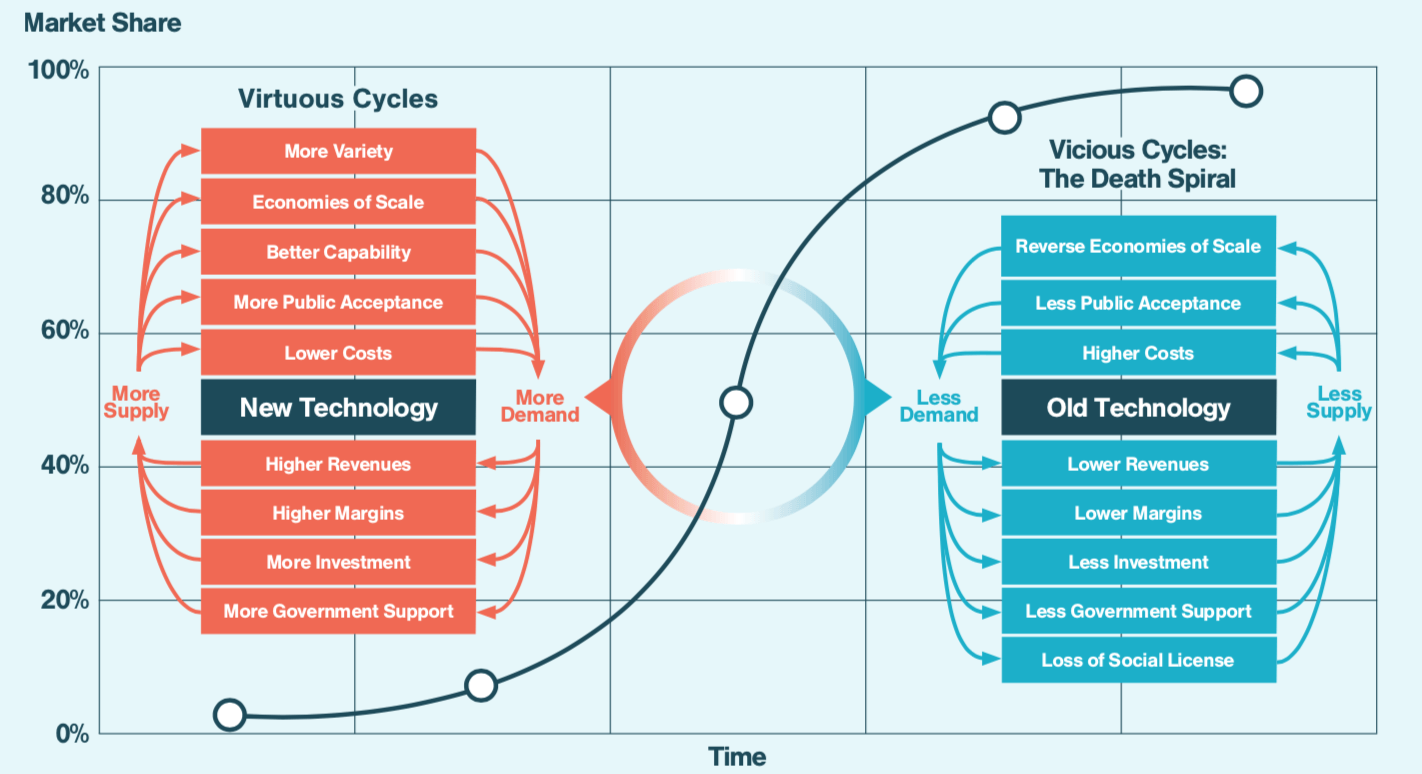Why the transportation industry should look forward to “TaaS disruption" — Part 2

TaaS disruption is a tech-driven revolution changing energy, food and transportation. In part two, we focus on the impact of autonomous vehicles and electric vehicles.
Following part one of this three-part blog series, we're speaking with RethinkX about their innovative energy model, Transportation as a Service (TaaS), and how autonomous driving technology and autonomous electric vehicles (A-EVs) will propel the energy, food and transportation industries into an efficient and sustainable new system.
But first a quick review. In their report, “Rethinking Climate Change", RethinkX suggests that major global industries already have the technologies needed and should plan to scale solar, wind and battery power, A-EVs, precision fermentation and cellular agriculture (SWB, A-EVs, TaaS, PFCA), if they want to reduce and go beyond zero emissions.*
Dr. Bradd Libby, a researcher for thinktank RethinkX, joins us for the second round of our discussion about TaaS disruption.

In the above graphic, RethinkX demonstrates the benefits for fleet managers when switching from autonomous gas-powered vehicles to autonomous electric vehicles.
Image credit: RethinkX
The driverless difference
The TaaS model positions autonomous vehicles and A-EVs as key components of a system that promises “cheap, clean and abundant" transportation for everyone.
Libby explains: “For the average individual, it will mean less money spent on transportation, a savings of about US$5,400 per year for the average American family. Cleaner urban air will help reduce pollution, decreasing the roughly seven million people worldwide killed by poor air quality each year. Autonomous driving will reduce the 1 million+ people killed each year in car accidents."
In their report*, RethinkX forecasts a future with a majority of vehicles operated by autonomous driving tech, including EVs, eliminating the need for gas-powered transportation.
Libby states: “Private vehicle ownership will cease to be the prevailing road transportation model... reducing the number of cars on the road."
By 2030, RethinkX expects 95% of all passenger miles traveled will be made in on-demand A-EVs owned by fleets, not individual people.*

RethinkX claims, “A-EVs and the TaaS disruption of transportation will eliminate 13.9% of global emissions."*
Image credit: RethinkX
Large-scale usage of autonomous vehicles and A-EVs will create an impressive ripple effect, benefiting forests and oceans. “Clean, cheap energy, and the productivity from A-EVs and other machine labor, will dramatically reduce the cost of both active reforestation as well as technology-based approaches to carbon withdrawal... We estimate that the disruptions of energy, transportation and food will together reduce the cost of carbon withdrawal to under US$10 per ton by 2040," offered Libby.
We need more people thinking about these issues. The eight technologies, in the “Rethinking Climate Change" report, are advancing in capabilities and economics faster than society's thinking about their implications.
Beyond ground transportation, short-haul aviation (which makes up about one-third of all emissions from commercial aviation) will be disrupted by electric aircraft and overnight road trips made possible by commercial A-EVs.
And, don't forget about ocean freight: “Emissions from shipping will also be disrupted by the electrification of ships along with changes in commodity demand — the largest categories of freight including crude oil, oil products, coal, natural gas, iron ore, steel, grain and livestock will all see demand plummet."*

The TaaS disruption fueled by autonomous and new energy technologies will create significant changes across transportation and oil industries, eliminating entire portions of their value chains... but also creating trillions in new business opportunities, consumer surplus and GDP growth.*
Image credit: RethinkX
It might be difficult to imagine how autonomous tech will impact the day-to-day lives of the average person. Envision a simple scenario like driving to the mall.
Libby explains: “If there were autonomous electric trucks and autonomous electric delivery vehicles, we might not need any retail space at all... Why would anyone ever go to a grocery store again? If most people used robotaxis summoned by their phone, what would they do with their garage? Renovate it into more living space? Or use it for storage of non-perishable goods and run their own mini-warehouse as a home business? Who knows!?"
Join HERE360 for Part 3 of "Why the transportation industry should look forward to TaaS disruption" where we'll address how technology, and people's attitudes toward it, can help make or break TaaS disruption and mitigate climate change.
See how Automated Driving is paving the way for a sustainable future.
*Reference: “Rethinking Climate Change", RethinkX, 2021
Dr. Bradd Libby was interviewed on December 1st, 2021
Have your say
Sign up for our newsletter
Why sign up:
- Latest offers and discounts
- Tailored content delivered weekly
- Exclusive events
- One click to unsubscribe

